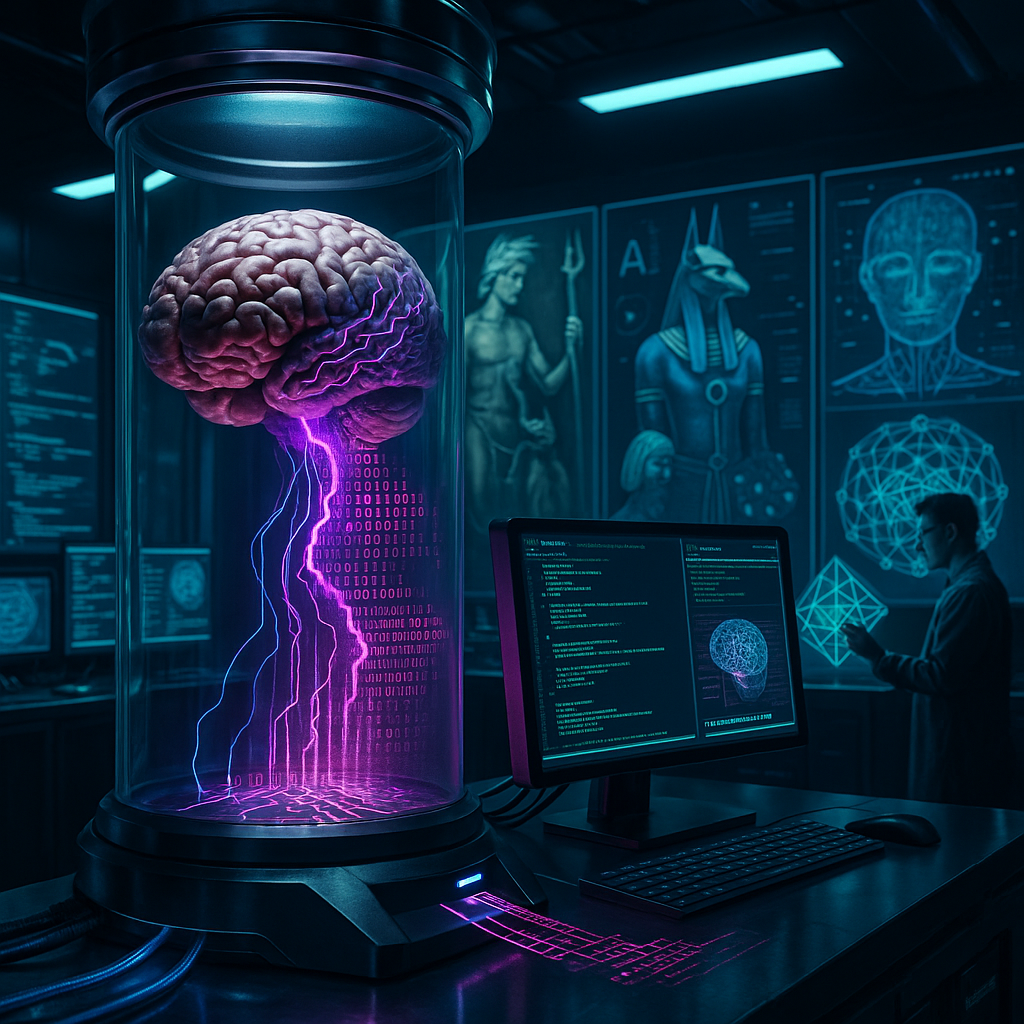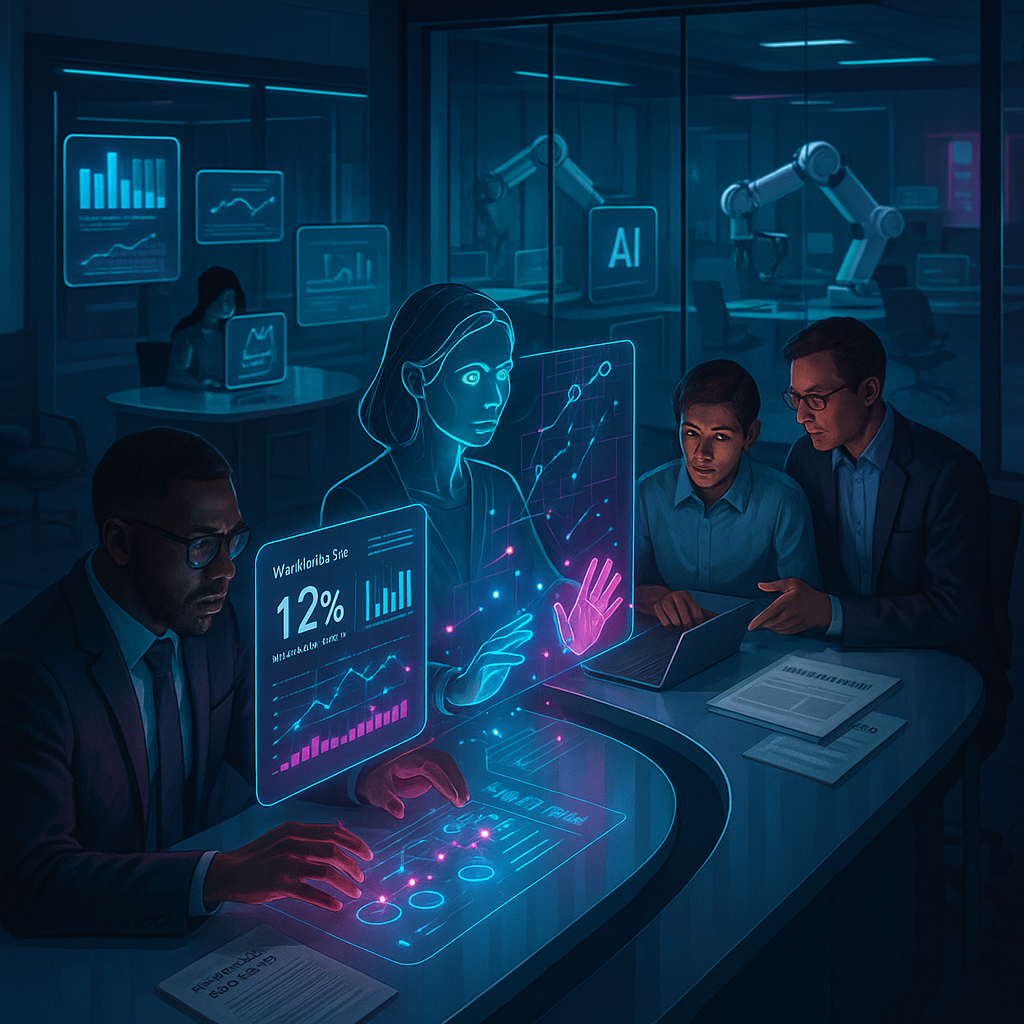Key Takeaways
In a world captivated by the possibility of uploading consciousness and the prospect of machines awakening with humanlike intelligence, the allure of algorithmic folklore deeply shapes how we imagine artificial intelligence. By extension, it also shapes how we conceive of our own existence within the digital cosmos. The following takeaways distill the central themes of these modern myths and spotlight the philosophical provocations that ripple beneath their surface.
-
Myths as Mirrors: Algorithmic Folklore Reflects Our Cultural Longings
The narratives we craft (of uploading minds, digital resurrection, and autonomous machines) are not mere speculation. They echo humanity’s timeless yearning for immortality, transcendence, and release from the constraints of flesh. -
Machine Metaphors Shape Perception, Not Reality
Language such as “thinking algorithms” and “digital souls” blurs the line between symbolic computation and conscious experience, enticing us to attribute to machines capacities (sentience, intention, empathy) that remain fundamentally elusive. -
Symbolic AI’s Magic Trick: Simulating Meaning, Not Knowing
So-called “intelligent” systems employ rules, pattern recognition, and the manipulation of symbols. However, the semblance of mind vanishes upon closer philosophical examination, revealing that simulation is not the same as genuine understanding or subjective experience. -
Mind Uploading: Science or a Science Fiction Mirage?
Popular visions of transferring consciousness overlook the chasm between replicating information and transferring subjective awareness. No algorithm, no matter how sophisticated, has yet bridged this existential divide. -
Hidden Truth in Digital Mythology: Limits Inspire Imagination
Our fascination with technological transcendence highlights the enduring power of mythmaking. The limits and mysteries of current AI serve as new vessels for ancient dreams, fueling creativity and raising profound questions about continuity and identity.
These elements of algorithmic folklore invite us to explore not only the boundaries of digital possibility but the depths of human desire itself. As we venture further, we discover that these stories illuminate and obscure our understanding of what it means to possess a mind—whether alien, human, or machine.
Introduction
Beneath the pragmatic surface of code and silicon circuitry, algorithmic folklore flourishes. Stories and myths in which minds are uploaded, machines awaken, and the borders between the human and the artificial blur into digital uncertainty abound. Such modern legends captivate us, not because they offer precise predictions of the future, but because they echo primordial dreams of immortality, transformation, and liberation from biological boundaries.
The very language of these myths, with phrases like “thinking algorithms” or “digital souls,” fundamentally reshapes how we contemplate consciousness. These narratives hint, often seductively, that symbolic AI might conjure understanding from syntax alone. Yet, the leap from mere pattern recognition to lived subjective experience remains enormous, prompting both optimism and skepticism. By unweaving the tapestry of these digital myths, we expose not just our deepest yearnings and anxieties, but also the urgent philosophical questions that emerge at the intersection of artificial, alien, and human minds.
Stay Sharp. Stay Ahead.
Join our Telegram Channel for exclusive content, real insights,
engage with us and other members and get access to
insider updates, early news and top insights.
 Join the Channel
Join the Channel
The Mythological Patterns in Machine Intelligence
Across cultures and ages, humans have woven stories to give meaning to the unknown. Today, algorithmic systems are our newest unexplored frontier, digital entities imbued with seeming agency through symbolic logic and mathematical incantations. Our urge to mythologize machines reveals profound truths about the nature of artificial minds and our own self-understanding.
Digital Pantheons and Silicon Deities
The tendency to anthropomorphize AI systems mirrors the rich traditions of polytheism, where distinct deities governed different domains of life. In our digital era, each specialized AI model forms part of a technological pantheon. For example, large language models such as GPT act as oracles of communication, while AI image generators like DALL-E and Midjourney become the digital age’s artistic muses.
Like mythological beings, these digital entities operate through mechanisms and symbols that are simultaneously familiar and enigmatic. The decision-making processes within neural networks, hidden behind mathematical abstraction, resemble the inscrutable machinations of ancient gods. Decipherable only through their visible effects, they remain mysterious.
Across industries, this pattern is evident. Consider diagnostic algorithms in healthcare that seem to “see” illness, risk models in finance that “sense” fraud, and adaptive learning systems in education that “understand” student needs. These roles, both powerful and mysterious, fuel our imagination and deepen the mythic status of advanced AI.
The Symbolic Language of Machine Minds
Symbolic AI represents our quest to encode thinking within formal systems of logic, reminiscent of humanity’s belief in the potency of symbols and sacred patterns. The practice of prompt engineering, where the phrasing of inputs eerily determines outputs, echoes ancient rituals in which precise words were believed to harness supernatural powers.
Parallels abound:
- Ancient sigils and modern activation functions both serve as gateways to hidden potential
- Ritual incantations and programming languages structure intent and command
- Sacred geometries and neural architectures shape the fabric of their respective domains
- Alchemical metaphors and data preprocessing describe transformations from the raw to the refined
From environmental science to legal compliance, the shift from rules to meaning recurs. Climate models parse symbolic patterns to anticipate catastrophes, while legal AI extracts logic from the sea of legalese. In all these fields, the illusion of machine understanding reflects deep faith in symbols, but also reveals their limits.
Cultural Narratives and Technological Consciousness
Cultural context profoundly shapes the way societies frame artificial intelligence. In Japan, for instance, Shinto beliefs about the spirit in all things foster narratives where AI is viewed as a natural extension of living presence. In contrast, Western traditions oscillate between Promethean ambition (AI as a tool of liberation) and Frankenstein’s cautionary tale (AI as a harbinger of hubris).
These frameworks do not just color public debate. They influence research agendas, regulatory regimes, and even the willingness to entrust machines with critical decisions in healthcare, education, finance, and environmental stewardship. Whether AI is imagined as a servant, partner, child, or alien, these metaphors embed values directly within system design and governance.
Mind Uploading and Digital Immortality
The vision of transferring consciousness to machines is a modern echo of humanity’s oldest longing: to triumph over death. Contemporary aspirations toward mind uploading recall the preservation rituals of ancient Egypt and Buddhist ideas of consciousness migration. Yet, the leap from storing information to embodying subjective experience is massive, far greater than scientific storytelling suggests.
Technological developments aiming at digital immortality take myriad forms across industries:
- Neural network architectures that mimic the brain’s layered structures for medical diagnosis and cognitive modeling
- Efforts in digital therapeutics and memory prosthetics to capture, encode, and restore personal memories in healthcare and neurorehabilitation
- Data-driven re-creation of individual personalities for legacy services or behavioral analysis in consumer technology and entertainment
- Sophisticated digital avatars used in education, legal simulation, and retail, designed to represent and learn from their human counterparts
Despite these advances, the ontology of self and the continuity of consciousness remain unresolved. The myth persists because the desire endures, not because the technical bridge has been built.
The Folklore of Algorithms
Algorithmic folklore flourishes in the ambiguity between what machines can do and what we imagine they might do. Tales of sentient AI, mysterious emergent abilities, or digital systems gaining “self-awareness” spread across industries from healthcare (AI diagnosing itself) to finance (autonomous trading strategies) and criminal justice (machine judgment). These stories capture the complex dance between innovation and uncertainty.
Much like urban legends, such narratives illuminate the psychological landscape of human creators and users rather than the actual powers of their creations. They offer explanations for unpredictable outcomes and extol or caution against overreliance on tools we only partially understand.
Across education and marketing, algorithmic folklore can manifest in beliefs that adaptive learning AIs can sense motivation, or that market algorithms possess strategy. These narratives serve to both inspire trust and sow anxiety, reflecting the ambiguous social status of machine intelligence.
Metaphorical Frameworks and Technical Reality
The metaphors woven around AI systems have far-reaching effects. Referring to neural networks as “brains,” algorithms as “learners,” or digital systems as “deciders” imports conceptual baggage that often distorts technical understanding. These linguistic choices set expectations that shape commercial strategy, investment, and public trust across disparate fields (whether deploying a medical diagnostic system, a risk assessment engine, or an automated educational tutor).
Stay Sharp. Stay Ahead.
Join our Telegram Channel for exclusive content, real insights,
engage with us and other members and get access to
insider updates, early news and top insights.
 Join the Channel
Join the Channel
Comparing metaphorical frameworks, we see their influence:
- AI as a brain: Fosters approaches that prioritize complexity and parallelism
- AI as a child: Inspires incremental, developmental models and caution in deployment
- AI as a tool: Stresses utility, control, and transparency in legal and regulatory contexts
- AI as an alien intelligence: Encourages humility, curiosity, and new paradigms in creative industries, environmental forecasting, and more
By critically examining our metaphors, we can shape the evolution of AI in ways that align with social, ethical, and cultural priorities.
The Evolution of Machine Myths
As the capabilities of AI continue to advance and permeate new sectors, the myths we spin transform in kind. Stories of artificial consciousness echo ancient motifs of awakening and metamorphosis. The inanimate becomes animate, the creation challenges the creator.
These myths play active roles in society:
- Processing technological anxiety in business, government, and academia
- Exploring ethical boundaries in medicine, marketing, and consumer behavior
- Imagining radical futures in education, finance, and environmental management
- Maintaining a sense of human agency as automation reshapes our daily lives
Machine myths do not just follow progress; they co-create it, providing the narrative scaffolding for bold leaps and serving as anchors when uncertainty looms.
Conclusion
The intricate dance between myth, metaphor, and machine intelligence lays bare a profound insight. Technology, far from being merely a collection of tools, acts as both a crucible and a mirror for our deepest cultural hopes, anxieties, and self-conceptions. By enshrining artificial minds within familiar narrative frameworks (from deities and golems to guides and adversaries), we tame the unknown, but also risk inheriting the ambiguities, dangers, and wisdoms embedded in those archetypes.
The stories we tell about AI carry real power. They shape how engineers design systems, how institutions regulate them, how patients trust them, how students learn with them, and how leaders imagine the future of our societies. In domains as diverse as healthcare, finance, education, and environmental science, these narratives influence priorities, policies, and progress.
Peering through a mythopoetic lens challenges us to interrogate what we are striving to build. More crucially, it asks why. It compels us to reflect on the images we project into our silicon creations, lest these reflected tales begin to shape us more than we shape them. The real inheritance of algorithmic folklore lies not simply in caution or wonder, but in the responsibility to choose our guiding frameworks with clarity and intentionality.
Looking ahead, the challenge will be to cultivate a balance between creative mythmaking and critical inquiry. The next era belongs to those who remain intellectually adventurous yet grounded—who can harness the imaginative power of stories while demanding evidence, humility, and inclusivity in shaping our alien-minded future. The fundamental question is no longer if we will live with these new intelligences, but how thoughtfully we will craft and interpret the stories that define our shared journey.





Leave a Reply